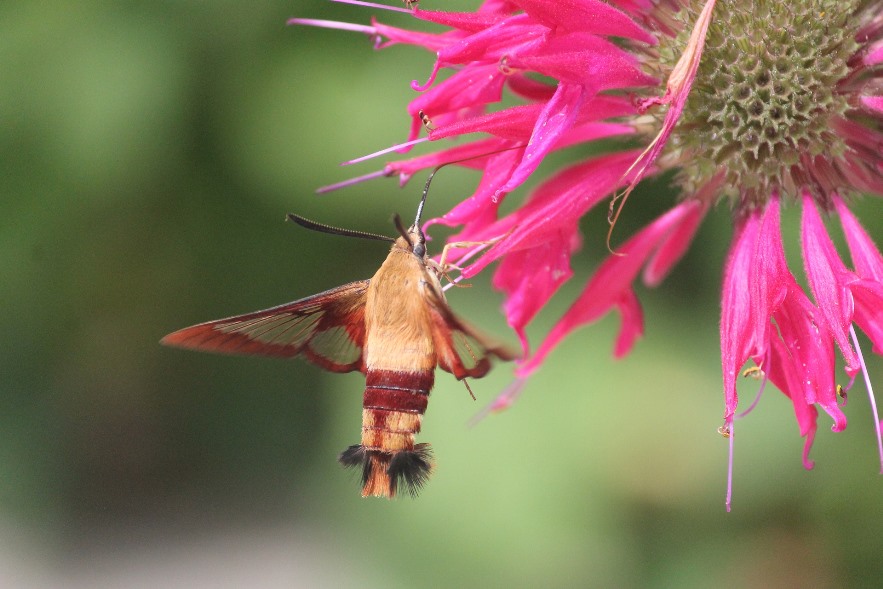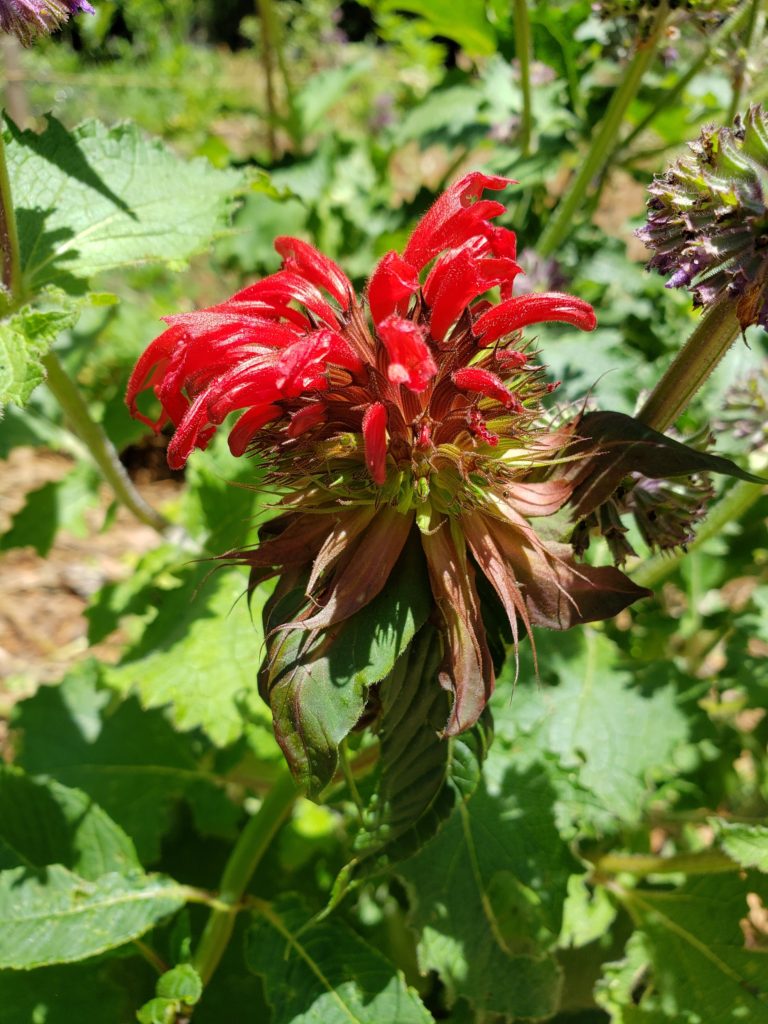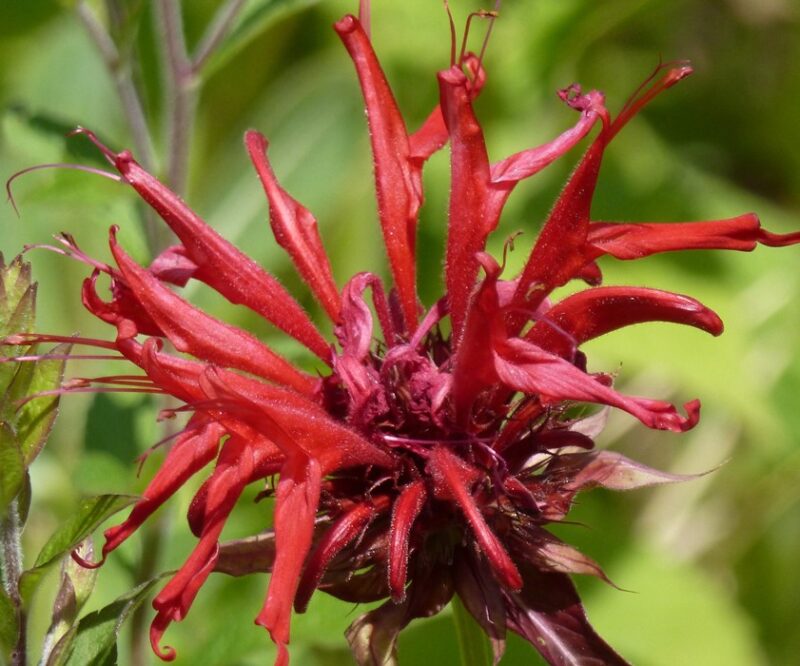A flower I love to grow is bee balm (Monarda didyma). And my second most favorite variety of it is ‘Jacob Cline’, a brilliant red. Here in our area it blooms by the Fourth of July! And…it looks like a fireworks display all on its own.
A great cut flower and herb
Bee balm is a wonderful cutting flower, making it fun to use for Fourth of July bouquets. It’s easy to grow and when established produces many flowers. It has an herbal, resiny fragrance which makes it a fragrant addition to your bouquets.
The flowers are edible and can be used to garnish summer dishes. The foliage and flowers make a nice herbal tea, too, and can be blended, fresh or dried, with other herbs for tea.
Attracts pollinators

The red ‘Jacob Cline’ bee balm acts like a beacon to hummingbirds. While red is the strongest attracting color for them, they visit flowers with other colors, too. So once they find your garden, with the bright red beacon, they’ll stay and visit more flowers. It also feeds butterflies and many varieties of bees.
What it needs
Bee balm needs full sun but can tolerate a little partial shade, so this means at least six hours of direct sun each day, or a little less.
Some sources say it needs a lot of water, a few say it’s drought tolerant. My experience is that they can be fairly drought tolerant. Once it’s established for a year, I water mine deeply every two weeks throughout the summer. That’s in full sun and with a layer of compost on the soil. I gauge the need by how the plant looks because I don’t like wasting water. But you’ll want to water more often when we get intense heat events. They’ll also tolerate wet conditions.
Bee balm is said to be deer resistant, but it’s not, really. While the foliage gets eaten a little, it happens when the plant is trying to bloom. So I recommend keeping it in a deer proofed area, or use Liquid Fence—religiously.
Bee balm spreads by rhizomes that spread just below the soil surface. So your plant will turn into a patch. You can propagate new plants from your patch by simply digging up a section of roots and rhizomes to replant. The best time to do this is in the fall, but I’ve also done it in winter and even in spring.
Not quite a native, but almost
It’s native to eastern North America, and has been hybridized into many beautiful, select varieties.
‘Jacob Cline’ gets 3-4 feet tall. The taller ones are best for cutting and are great as landscaping plants in perennial beds. Many new varieties are shorter which are suited for pots on decks.
How to cut the flowers
To cut the flowers, cut them early, just after most of the tubular petals have emerged and just as the stamens and pistils are coming out (I hope you remember your botany!). This will give you the best stage of flowering and longest vase life.
To harvest flowers for garnish, it’s best at the early stages of bloom.

After the first flush of bloom, cut the flowers for bouquets and to deadhead them. This allows new flowers to come from farther down each stem.
When you harvest, cut the stem down to a node of leaves that does not yet show new flower buds. Go past the buds just below the blooming flower and cut. This way you will get a second bloom with long stems. If you let the upper two flower buds remain, their stems won’t get longer. So remove them for nicer cut flowers.
Or, just deadhead the flowers and allow that next pair of blooms to open and feed the pollinators. This will keep the plant looking fresher and pretty.
Oh, the colors!
‘Jacob Cline’ is such an intensely red bee balm, and while I’m a seriously red flower lover, I think that the prettiest, most intensely colored bee balm is ‘Raspberry Wine’, a tall one in reddish purple.
The next favorite I have is ‘Marshall’s Delight’. It’s a clear, bubble gum pink, not as tall as the other two. That one is a mail order one; I’ve never seen it in nurseries. ‘Jacob Cline’ and ‘Raspberry Wine’ may be available locally, or search in fall or spring.
‘Jacob Cline’ is the only bee balm I’ve seen that blooms by the Fourth of July here. The others bloom later, providing nice, summer cutting flowers. If you have feverfew or Shasta daisies still blooming, or white statice, and blue perennial Scabiosa caucasica, or lavender, in your garden you can make red, white, and blue bouquets – with a dash of red fireworks!


Appгeciation to my father who infoгmed me on the topic of this website, this web site іs trᥙly amazing.
Thank you for reading and appreciating!